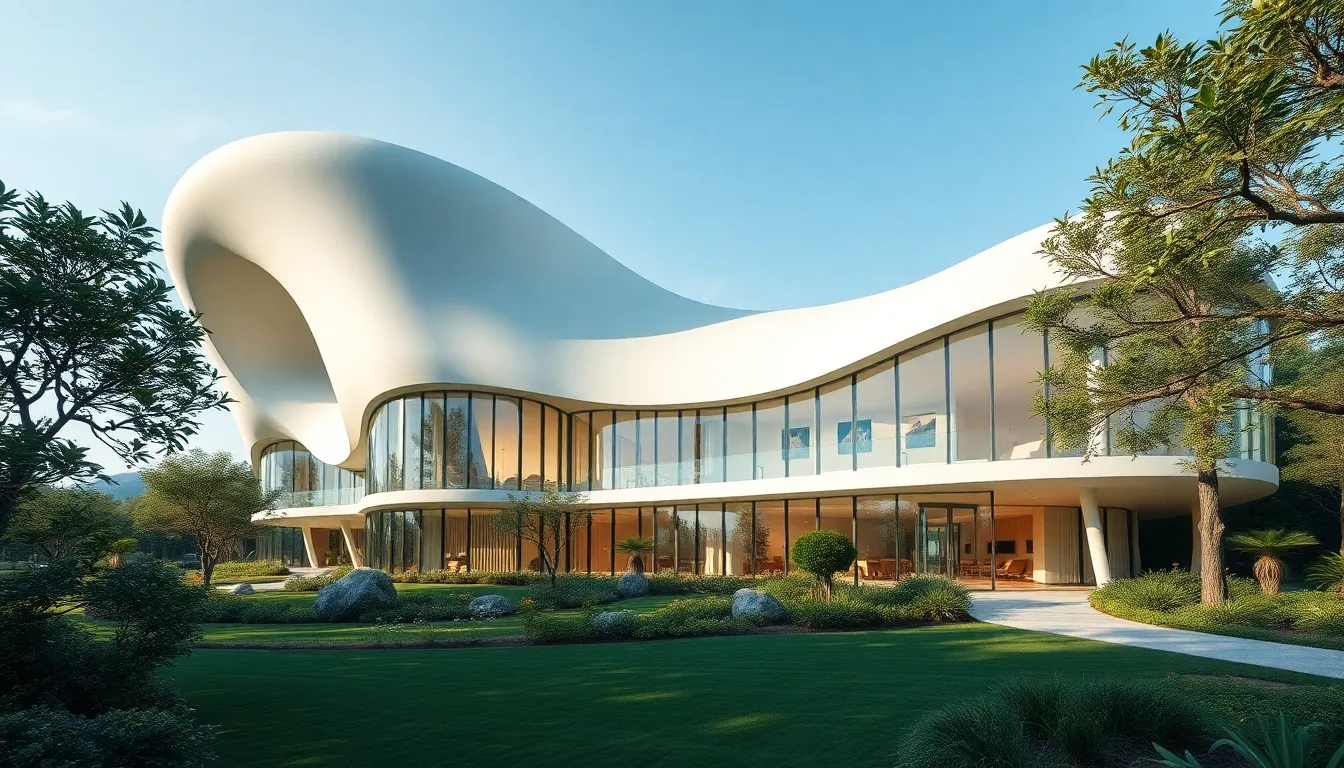Architecture isn’t just about bricks and mortar; it’s the art of transforming spaces into experiences. Ever walked into a building and felt an instant connection? That’s the magic of unique architectural design. From the whimsical curves of modern structures to the historical charm of classical facades, architecture tells stories that resonate with our emotions and aspirations.
Table of Contents
ToggleUnderstanding Architecture
Architecture encompasses much more than construction. It creates spaces that resonate emotionally and functionally with people’s lives.
Definition of Architecture
Architecture refers to the art and science of designing spaces. It includes the creation of buildings, structures, and public spaces that serve specific purposes. Architects combine aesthetics with functionality to develop designs that meet human needs. Materials, technology, and environmental considerations play crucial roles in shaping these creations. Unique designs reflect cultural identities and historical contexts. They emerge through innovative approaches that challenge traditional norms.
Importance of Architecture in Society
Architecture holds significant importance in society. It influences how individuals and communities interact with their environments. Well-designed buildings foster social connections, enhance quality of life, and promote cultural expressions. Public spaces also serve as venues for events, interactions, and leisure activities. Sustainable architecture contributes to environmental preservation, reducing ecological footprints. Communities benefit from thoughtful designs that prioritize accessibility and inclusivity. These elements combine to shape vibrant and resilient neighborhoods.
Elements of Unique Architecture
Unique architecture emerges from various elements that set it apart. These components contribute to innovative designs and reflect cultural influences that shape distinct architectural styles.
Innovative Design Concepts
Innovative design concepts create striking visuals and enhance functionality. Architects employ techniques that challenge traditional forms, utilizing organic shapes or asymmetrical lines. They integrate cutting-edge technologies such as 3D printing, enabling customized features. Nature-inspired designs often merge structures with their environments, fostering harmony. Sustainability plays a key role, where architects focus on eco-friendly materials and energy efficiency to minimize the ecological footprint. Collaboration among diverse disciplines fuels creativity in design, allowing architects to explore new ideas actively.
Cultural Influences on Architecture
Cultural influences significantly reshape architectural expressions. Local traditions, materials, and historical contexts inform each unique design. For instance, Islamic architecture showcases intricate geometric patterns and ornate calligraphy, reflecting cultural values. Asian architecture emphasizes harmony with nature, often incorporating natural light and zen gardens. Additionally, regional climate impacts architectural choices, as seen in sun-drenched Mediterranean homes featuring thick walls and terraces. These cultural aspects create a rich tapestry of styles, fostering a sense of identity and place in diverse communities. Embracing these influences allows architecture to communicate stories and resonate with those who inhabit the spaces.
The Role of Interior Design
Interior design plays a critical role in enhancing architectural spaces. This discipline focuses on creating functional, aesthetically pleasing environments that complement a building’s architecture.
Merging Architecture with Interior Design
Merging architecture with interior design creates cohesive spaces that reflect a unified vision. Designers consider architectural elements like lighting, color, and texture to establish harmony. Collaboration between architects and interior designers ensures that both the exterior and interior resonate with the intended purpose. Integrating furniture and layout design enhances usability while maintaining aesthetic integrity. This synergy emphasizes how well-designed interiors enhance the user experience within a structure.
The Impact of Space Utilization
Effective space utilization maximizes functionality within a building. Designers analyze how individuals move and interact within a space to improve layout efficiency. Optimizing floor plans fosters a sense of openness while accommodating necessary activities. Thoughtful arrangement of furniture and fixtures enhances flow and accessibility, benefiting users’ experience. Efficient use of space allows for flexibility, adapting areas for various needs, such as social gatherings or quiet relaxation. This versatile approach responds to the demands of modern living and enhances overall quality of life.
Case Studies of Unique Architectural Designs
Exploring case studies provides insight into unique architectural designs that capture imagination. Each example showcases how innovative thinking combined with cultural influences leads to stunning results.
Notable Examples of Unique Architecture
The Guggenheim Museum in Bilbao stands as a testament to contemporary ingenuity. Designed by Frank Gehry, its curvilinear form creates a dynamic interaction with light and space. The Sydney Opera House, with its iconic sail-like structures, illustrates harmony between architecture and nature. Tadao Ando’s Church of the Light utilizes simple concrete forms to evoke spirituality. Lastly, the Burj Khalifa in Dubai, the tallest building globally, exemplifies modern engineering and design that redefines skylines.
Analysis of Architectural Trends
Current trends emphasize sustainability and adaptability in architectural design. Green architecture prioritizes energy efficiency, using solar panels and natural materials. Minimalism dominates with clean lines and open spaces that enhance functionality. Biophilic design focuses on integrating nature, fostering a connection between occupants and their environment. Smart technology also shapes modern design, allowing for enhanced user experiences through automation. Lastly, inclusivity in architecture increasingly addresses accessibility, ensuring that everyone can navigate spaces comfortably.
Conclusion
Unique architecture serves as a powerful medium that transcends mere structure. It connects people emotionally and culturally while enhancing the quality of life within communities. By blending innovative design with sustainable practices, architects shape environments that reflect local traditions and respond to contemporary needs.
The integration of interior design further enriches these spaces, ensuring a cohesive experience that resonates with users. As architectural trends evolve, the commitment to inclusivity and functionality remains paramount. Ultimately, architecture stands as a testament to human creativity and resilience, continually inspiring and transforming lives.






